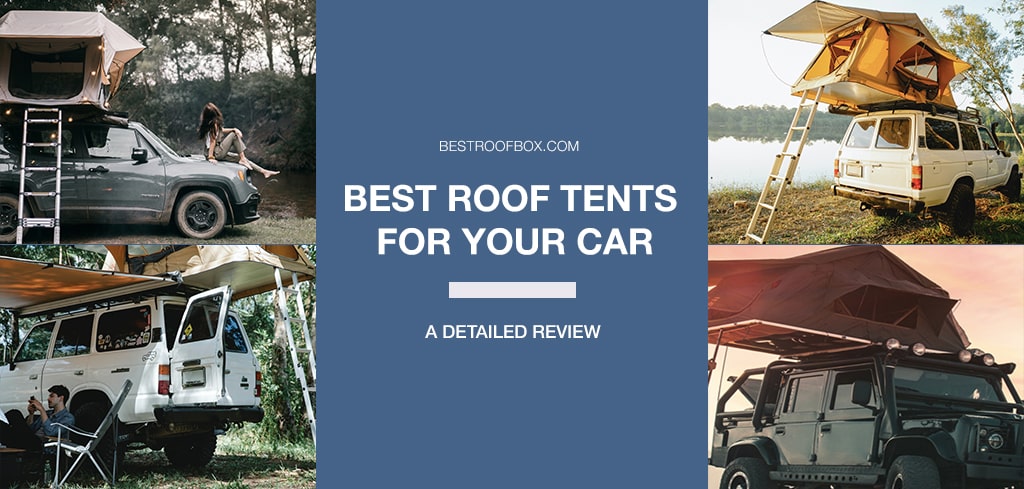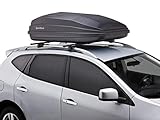We like to imagine road trips as the pinnacle of personal freedom and family fun time. They’re our chance to get away from the shackles of our daily routine and let ourselves experience the grandeur of nature or the adventure of the open road.
When we think of camping trips, we think of Jack London, Call of the Wild, and the grandeur of the Great Outdoors unfolding before us.
- Best Aerodynamic Design - INNO Wedge Plus Cargo Box (paid link)
When we think of road trips, we think of Jack Kerouac, On the Road, and the allure of being in a different city or small town every day with new people to meet, places to see, and adventures waiting around every bend.
What we don’t think about is the hassle of having to schlep days’ worth of camping equipment or personal supplies.
If you are traveling with friends and family, you’ll hardly want to shove all of that equipment in the back and on top of people. Even if you are just traveling with one other person who rides up front with you, shoving all those things in the back or in your trunk may still not afford you enough storage space.
There has to be a better way – and, thankfully, with roof boxes, there is.
 Whether you’re going camping or driving cross country, a roof box is essential for long trips. They’re sleek, sturdy, spacious, and provide you with an elegant solution to your storage problem.
Whether you’re going camping or driving cross country, a roof box is essential for long trips. They’re sleek, sturdy, spacious, and provide you with an elegant solution to your storage problem.
That said, roof boxes are anything but simple. On the contrary, there is a ton of variation between different kinds of roof boxes. A roof box is a significant investment, and you’ll, thus, want to be sure you’re getting one of the best models on the market and an option that is perfect for your particular storage needs.
With that in mind, let’s take a look at what you should look for in a roof box, which options are topping the market, and which of those are the best suited for your next big trip.
Table of Contents
The Comparison Table








Last update on 2025-11-12 / Affiliate links / Images from Amazon Product Advertising API
The Roof Box Buyer’s Guide: 12 Things to Consider
Whether you’re going fishing or going to Vegas, anyone looking to buy a roof box will want to take the following 12 factors into consideration.
1. The Price
One of the first things you’re probably bound to wonder about when searching for roof boxes is the price. For as much as you want a quality roof box, you don’t want to pay a fortune for it. That said, you don’t want to go too inexpensive, either – after all, you get what you pay for, right?
So, how much should you expect to pay for a reasonably good roof box?
A good estimate for an average roof box is around $300. With more bells and whistles, you can expect to pay a couple hundred dollars more. Size matters, too, and larger units will naturally be most costly.
2. Box Security
 Of course, it doesn’t matter how much money you spend on a roof box if it is easily snatched off your roof. It is, thus, of the utmost importance that you find roof boxes that score highly in terms of box security. You always want to look for roof boxes that feature locks for keeping your possessions safe.
Of course, it doesn’t matter how much money you spend on a roof box if it is easily snatched off your roof. It is, thus, of the utmost importance that you find roof boxes that score highly in terms of box security. You always want to look for roof boxes that feature locks for keeping your possessions safe.
Incidentally, this is one reason why you’ll want to opt for a hard roof box over a softer bag. The latter options tend to be less expensive and may be better for shorter, less elaborate trips. That said, they aren’t as durable, and don’t come with locks. By contrast, any hard roof box worth its salt should come with locks.
Their harder exterior, in addition to protecting your possessions from the elements, also protects them from potential thieves knifing your bag and stealing its contents.
3. How Well They Secure in Place

Now we move from box security to the question of how well a given roof box secures into place. The last thing you want is to spend hundreds of dollars on a roof box and pack all your camping or road trip supplies inside only to have it fly off the roof mid-trip. When selecting roof boxes, therefore, you need to pay attention not just to the box itself, but how well it fits into place.
There are a few basic ways roof boxes are secured into place. Roof racks are among the most common of these roof box securing methods, as are ropes and ties.
How you secure your roof box in place will also depend on what kind of car you have. While most roof boxes are designed to fit well with the roof of most cars, you’ll still need to make sure that you have enough space to place them up there.
The smaller the roof, the smaller you’ll need your box to be for it to be properly secured. You want to avoid choosing roof boxes that extend too far off the back of your vehicle’s roof lest it fly off.
Finally, you’ll need to think about how your roof box is going to secure into place in adverse weather conditions. You don’t want a strong gust of wind to blow the roof box right off, or to see strong rain or snow cause it to slip off, or else have that same moisture seep into the box and ruin your possessions.
For this reason, many leading roof boxes today feature undersides that boast added friction to help them stay in place. In addition, if you are planning on driving in wet conditions, you’ll want to make sure to get a waterproof roof box.
4. Their Length and Width
 Next, you’ll want to think about how big the roof box is, beginning with its length and width. As mentioned above, you obviously need to make sure that your roof box isn’t so big that it’s slipping down the back or tumbling over the side of your vehicle.
Next, you’ll want to think about how big the roof box is, beginning with its length and width. As mentioned above, you obviously need to make sure that your roof box isn’t so big that it’s slipping down the back or tumbling over the side of your vehicle.
At the same time, however, you also have to make sure it’s wide enough to accommodate whatever you wish to pack. That means that you’ll have to give some serious thought as to what you actually plan on keeping in those roof boxes.
For example, if you are using them to transport something long and thin, such as skis, fishing poles, baseball bats, hockey and lacrosse sticks, or similar equipment, you’ll need to make sure you’re purchasing a roof box that is big enough and won’t inadvertently snap them.
The same goes for width. If you are planning on storing bags or similar items in your roof box, you’ll need to make sure that you have enough room to store them safely without cramming or crushing anything.
5. Its Weight
Then there’s the question of weight. Different roof boxes have different weight limits. What’s more, different vehicles are able to support different amounts of topside weight. You will, thus, need to make sure you are choosing a roof box that can carry your items without straining or breaking under the weight, and that the box’s own weight (empty and full) isn’t too much for your vehicle.
6. How it Impacts Your Gas Mileage
As if that weren’t enough, your storage box’s size and weight can also have an impact on your vehicle’s gas mileage. The last thing you want is to think you have enough gas only to find out you’ve reckoned without the added weight and drag of your roof box. By some estimates, a roof box can slow your car down by 35% or 10 miles per gallon.
That said, there is a lot of variation and obviously a lot of factors that may be responsible for those numbers, so do your own research and see if the roof box you are considering is a gas mileage liability.
7. How Aerodynamic They Are
 Implicit in that question of gas mileage is how aerodynamic a given roof box is. The more aerodynamic a roof box is, the more it can cut down on wind resistance, which in turn can help with gas mileage.
Implicit in that question of gas mileage is how aerodynamic a given roof box is. The more aerodynamic a roof box is, the more it can cut down on wind resistance, which in turn can help with gas mileage.
Thankfully, there are a wide range of sleek roof boxes out there. As described below, there’s an aesthetic side to this, but there is also a performance aspect to this.
Of course, this is another area where performance rubs up against cost. As a general rule, the more aerodynamic a roof box is, the more it will cost. That said, because an aerodynamic roof box can help cut down on gas mileage, investing in a more expensive roof box may be worth it if you go on long or frequent trips.
By contrast, bigger, bulkier roof boxes may be less expensive, but they are also precisely the type most likely to cause drag and potential gas mileage issues.
8. The Aesthetics
 With the other items on this list more concerned with function, let’s pause a moment to consider form. Maybe you don’t care if your roof box is a big bulky obtrusive item that makes your vehicle look old-fashioned or absurd.
With the other items on this list more concerned with function, let’s pause a moment to consider form. Maybe you don’t care if your roof box is a big bulky obtrusive item that makes your vehicle look old-fashioned or absurd.
That said, as we mentioned in discussing the issue of aerodynamics above, your roof box’s build can have an impact on how well your car is able to drive with it attached. In addition, a sleeker build with a finish that catches sunlight wonderfully just makes your vehicle look that much better while out on the open road.
That’s subjective and emotion-based, yes, but after all, why are you going on these trips if not to feel the emotions that come with awe and adventure? If an aesthetically-pleasing roof box enhances that feeling, all the better, right?
Whether for aerodynamics or sheer aesthetics, therefore, you’ll want to give some thought to how your roof box looks up there.
Long, sleek roof boxes are currently in vogue. These are often rounded at the front and taper back. These also tend to be the more aerodynamic ones. Clamshell roofs, by contrast, tend to open upward, which means they are built with more space toward the top and are, thus, larger than those longer, sleeker options.
Then there is the question of color. Obviously this is a highly subjective choice, and thankfully, you can find most of the leading roof box variants available in a rainbow of colors. In addition, you can often find them in chrome, matte, and everything in between.
9. Its Volume
 This is a big one – and, indeed, you should ideally look for a roof box that offers big-time volume and storage capabilities. How well that squares with other factors such as size, weight, and aerodynamic-ness is another matter. Taken on its own, however, more volume is almost always good.
This is a big one – and, indeed, you should ideally look for a roof box that offers big-time volume and storage capabilities. How well that squares with other factors such as size, weight, and aerodynamic-ness is another matter. Taken on its own, however, more volume is almost always good.
How these roof boxes are able to achieve that volume is another matter. Long slender boxes of similar sizes are likely to offer roughly the same volume and storage capabilities. It’s the “size” part that is key there. Different sizes will offer different degrees of volume, and many leading models will come in more than one size.
You will, thus, need to weigh your need for more volume against those other factors in determining which size is right for you.
10. Overall Compatibility
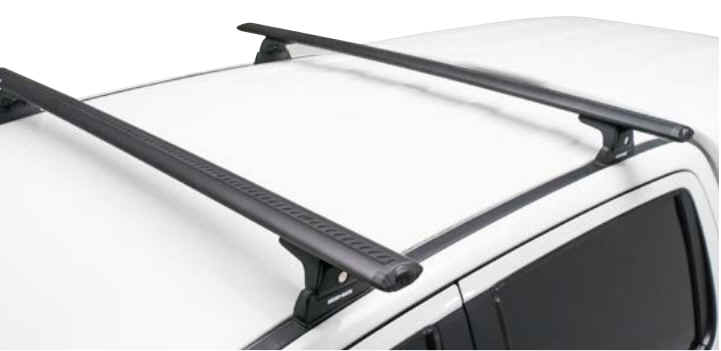 As alluded to above, compatibility is also essential to the roof box equation. You need to make sure that your roof box actually fits on top of your roof. We already talked a bit about securing it into place, but there’s more to that than simply making sure it doesn’t slide down the back or fly off the car.
As alluded to above, compatibility is also essential to the roof box equation. You need to make sure that your roof box actually fits on top of your roof. We already talked a bit about securing it into place, but there’s more to that than simply making sure it doesn’t slide down the back or fly off the car.
For one thing, certain roof boxes are designed with certain vehicles and classes in mind. You’ll, thus, want to pay attention to the vehicle classes listed for each of the roof boxes we mention below.
Whether or not your vehicle already has racks installed on top of the roof can also make a big difference in terms of which roof boxes are compatible, and how you can get them to fit. As mentioned, different roof boxes come with different roof racks. You’ll, thus, need to check if those racks can be attached to your roof’s existing racks and, if not, if the roofing box can work with the ones your vehicle already has.
Of course, all of that presumes that you have or will be able to attach roof racks to your roof in the first place. While it isn’t totally impossible to attach a high-quality roof box to a “naked” roof (this is where those ropes can come in handy) it will be significantly more difficult.
Without those racks, there will be fewer things in place to stop the roof box sliding about or even potentially sliding off the roof. You’ll, thus, need to be even more careful about the size, shape, and weight of the roof box you buy for roof rack-less setups.
If there is a silver lining to that, it’s that roof racks can be frustrating to install in some cases, so “at least” with a naked roof you don’t have to deal with that. Even so, it’s worth the potential frustration for the friction and far superior holding power that typically comes with roof racks.
If your vehicle is at all compatible with either the racks that come with a roof box or others that you can purchase for the job, it is advisable to use them.
11. The Way it Opens
 You might think that this would be one of the simplest factors on our list. How could the way a roof box opens possibly be something to give you pause? However, whether or not a roof box opens on one or both sides as well as how it opens at all is actually really important.
You might think that this would be one of the simplest factors on our list. How could the way a roof box opens possibly be something to give you pause? However, whether or not a roof box opens on one or both sides as well as how it opens at all is actually really important.
As alluded to above, roof boxes tend to open either on one or both sides. Naturally, the latter allows you to unpack things a lot easier and faster by allowing passengers on both sides of the car to pack or unpack things simultaneously.
In addition, if you are stuck parking with a support or wall on one side, you won’t have to worry about being potentially unable to unpack things because you’re blocked from accessing the one side of the roof box that can be opened.
You’ll also want to think about the direction in which things open. Clamshell roof boxes open upward, whereas other roof boxes open toward the left, right, or both.
12. Frequency of Use
Last, but not least, you’ll want to think about how often you plan on using this roof box. That will have a big impact on other factors on this list. If you travel often, for example, you may be willing to pay a higher price for a larger roof box that offers more bells and whistles.
On the other hand, if you only travel occasionally, or take shorter trips, then a smaller, more affordable roof box may be better.
The Top Six Roof Boxes
Now that we know what to look for in a roof box, let’s put that theory into practice and see how those factors play out with six of the top-rated roof boxes on the market.
1. Thule Motion XT Rooftop Cargo Carrier
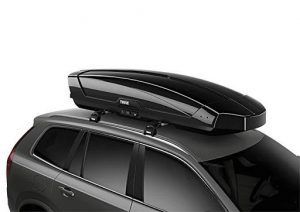 This is a perfect example of what a sleek, aerodynamic, modern roof box looks like. Its combination of size, voluminous storage space, and extra features easily make it one of the best roof box options on the market today.
This is a perfect example of what a sleek, aerodynamic, modern roof box looks like. Its combination of size, voluminous storage space, and extra features easily make it one of the best roof box options on the market today.
The unit is available in both 16 and 22 foot long models, while its interior dimensions measure 79 x 31.5 x 15, which ranks favorably against other roof boxes. That said, while the 22 foot long variant is on the longer side for roof boxes, it should not be a threat to slip off the back of most large vehicle’s roofs.
It opens on either side which, as noted above, can make it a lot easier to pack and unpack things, thereby saving you a lot of hassle. What’s more, this is one roof box that is built for adverse weather conditions. It features a grip system that allows it to stay in place and not slide around in wet or snowy weather.
In terms of load capacity, the Thule Motion XT is able to safely carry 165 lbs. Safety-wise, it is One Key System compatible, making it that much easier to lock it up and keep your items safe.
Among the other attractive features boasted by this offering include:
- A glossy white and black finish
- A lightweight fiberglass body
- A sturdy construction that helps keep the contents dry
- Enough storage space for an average of five to seven skis or three to five snowboards
At nearly $800, this is one of the most expensive options on the market. That said, as mentioned, you get what you pay for, and this is easily one of the best high-end roof boxes, especially for those looking to transport skis and similar items with ease.

2. Thule Force Cargo Box
 Sticking with Thule, we have another option that boasts a lot of internal storage space. The Thule Force Cargo Box boasts 21 cubic feet, which is great for those looking to pack for larger families or longer trips. It can easily carry several skis and snowboards as well as other long items such as fishing poles and hockey and lacrosse sticks.
Sticking with Thule, we have another option that boasts a lot of internal storage space. The Thule Force Cargo Box boasts 21 cubic feet, which is great for those looking to pack for larger families or longer trips. It can easily carry several skis and snowboards as well as other long items such as fishing poles and hockey and lacrosse sticks.
With that added size comes added weight. Like the Thule Motion XL, it weighs 165 lbs.
It features a torque indicator that is paired with the Power Click system, which allows you to mount the system easily. Simply press it into place and listen for the click. As with the Thule Motion XL, this is another roof box that you can open from either side, making it that much easier to pack and unpack.
In terms of compatibility, you’ll want to look for a mounting crossbar height of around 15.6 inches. That crossbar can make it trickier to mount than other options on this list. That said, the size and aerodynamic sleekness make it one of the best roof box options for those looking to pack lots of materials without resorting to bigger, bulkier clamshell boxes.
Compared to the Thule Motion XL, the Thule Motion is somewhat more affordable at around $600. If you’re looking for a first-rate roof box, but don’t want to spring for the Thule Motion XL, the Thule Motion is what you want.

3. INNO Wedge Plus Cargo Carrier

If you want a super high-quality cargo carrier that looks great and is aerodynamically designed for a lot more efficiency, the INNO Wedge Plus roof box is it. This cargo carrier comes in red and black, which is a sure sign of its quality.
The roof box even comes with a diffuser and special mat that you place at the bottom and which reduce the noise that other roof boxes tend to make as you drive. The INNO Wedge Plus roofbox is easy to set up and take down. It has a sleek design that makes it seem like you can store a lot. The INNO Wedge Plus roof box can easily hold skis, snowboards and fishing rods as well as tents.
This makes it perfect for outings any time of the year, so you can count on it to hold your belongings regardless of what season it is. Because it is lightweight, this carrier is easy to transport. It is lighter than 150+ lbs. This carrier is lighter than other carriers and weighs only 44 lbs. It can be installed and taken apart quickly and easily.
If you’re looking for a roof box that is guaranteed to keep your belongings secure and dry and is meant to last for many years to come, look no further because this is it.

4. FIVKLEMNZ Car Roof Bag Cargo Carrier
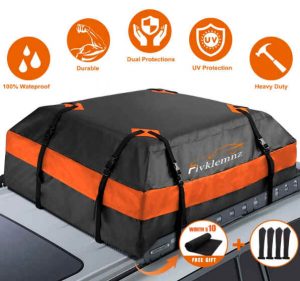
Let’s change gears. The FIVKLEMNZ rooftop car is a soft-shell carrier but there are many reasons why it’s one the most popular. The carrier is less than $100 and offers 15 cubic feet more space. It also comes with a protective mat that will protect your vehicle’s top.
The kit includes everything you need to properly install it. It also comes in a sleek black design with bright orange trim. It is made from 600D Oxford cloth, and features welded seams and a welded design to keep it watertight. It can hold everything from suitcases to sleeping bags, to name a few, and the waterproof zipper makes sure everything inside of the carrier is dry and secure.
It is super easy to set up and take down. It’s even easier to fold the carrier up and place it in the storage bag. This will ensure that it doesn’t take up too much space in your garage.
Protective mats also help the roof box to stay in place on bumpy or hilly terrain. This gives you an extra assurance that your belongings are safe, no matter how long you drive.
5. ToolGuards Rooftop Cargo Carrier with Mat
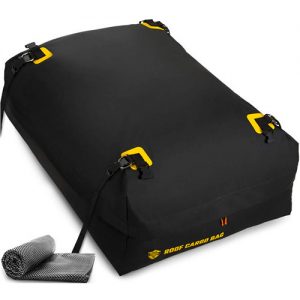
The ToolGuards Roof Bag is made of 100% waterproof material. It comes in neutral black and bright-yellow trim.
It has coated zippers and tough stitches that make it durable. You can also install it easily on any roof rack.
This cargo carrier can be installed in almost any situation. This rooftop bag is available for as low as $100 and protects your roof from damage. The enclosed mat also makes it stable so it doesn’t move while you drive.
It is quite large but has enough aerodynamic design to reduce wind resistance. This makes it an affordable rooftop carrier that will not cost you much more in fuel. ToolGuards is one of the top 10 rooftop carriers 2020.
This roof carrier is affordable, lightweight, but sturdy. It can hold tons of items so your car has more space.
6. SportRack Horizon Cargo Carrier

The SportRack Horizon roofbox comes in three sizes, adding up to 17 cubic yards of extra space to your vehicle. It is light and portable, can hold tons of stuff, and is very affordable.
The roof box can be loaded or unloaded from the passenger side, away from traffic. It’s made from impact-resistant ABS materials that keep everything inside dry and safe no matter how long the trip. The cargo carrier can fit most factory and square racks, as well as nearly all types of cars or trucks.
It protects your belongings against the elements, dirt, dust and grime. It has an aerodynamic design which makes it great for fuel efficiency regardless of how fast or far you travel.
The SportRack Horizon roofbox allows you to make your car more spacious. It is also super easy to put in and take out, which makes it great for those who have many trips planned. This roof box is a great option for keeping your belongings dry and secure, and is less than $600. It is the one cargo carrier that you will never regret buying.

In Summary
You have a wide range of choices when choosing a roof cargo box – which is just how it should be. Whether you’re going fishing or camping or hitting the open road for adventure, a trip is all about freedom, and freedom is all about choice.
The best roof box options listed here come with distinctive features that make each of them a great choice for different scenarios.
You’ll, thus, want to review your options carefully, consider which features from the Buyer’s Guide are most important to you, see which roof boxes best align with those – and then celebrate your freedom of choice by choosing the best roof box for your next big adventure.

